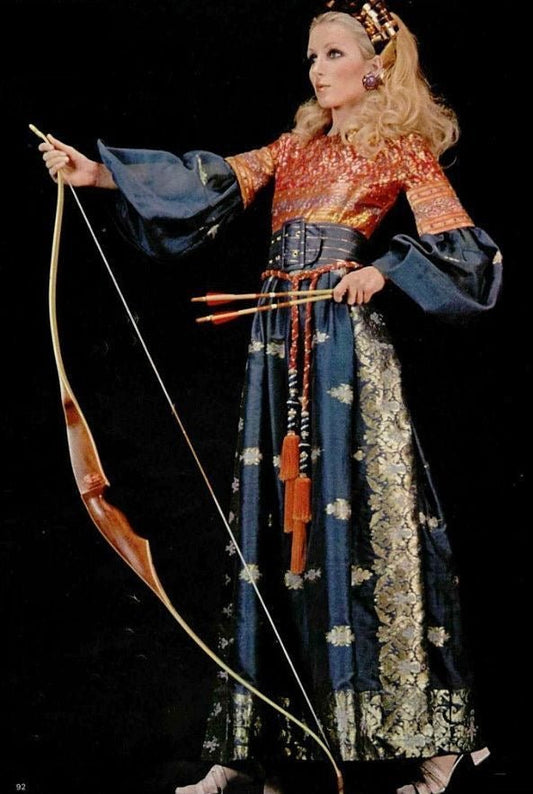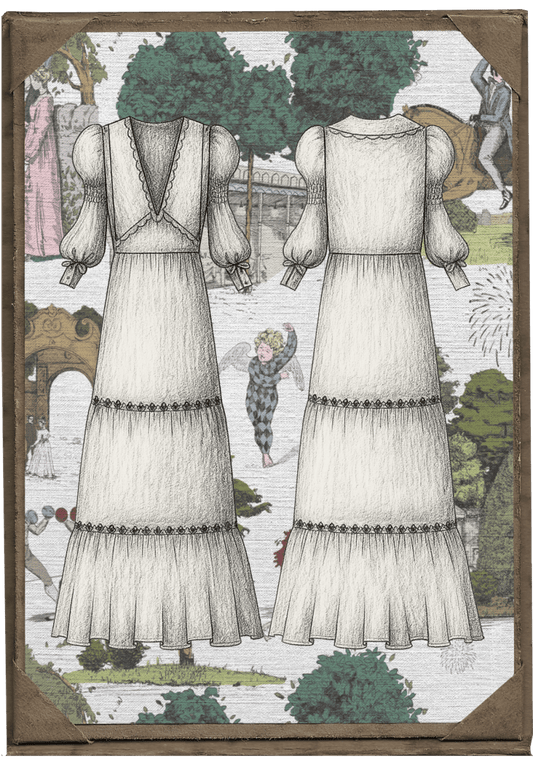Guest Blog Post by Molly Chatterton from Lillicoco Antique Jewellery
If you are a fan of Olivia Annabelle’s beautiful dresses, signature prints and classical forms, you will certainly have noticed a recurring motif: The Lover’s Eye.
Part of an 18th century jewellery craze, the Lover’s Eye is a little-known part of regency history, but it’s signature look has charmed jewellery historians and designers alike. Lillicoco, an antique and vintage jewellery company, uncovers more about Lover’s Eye jewellery.
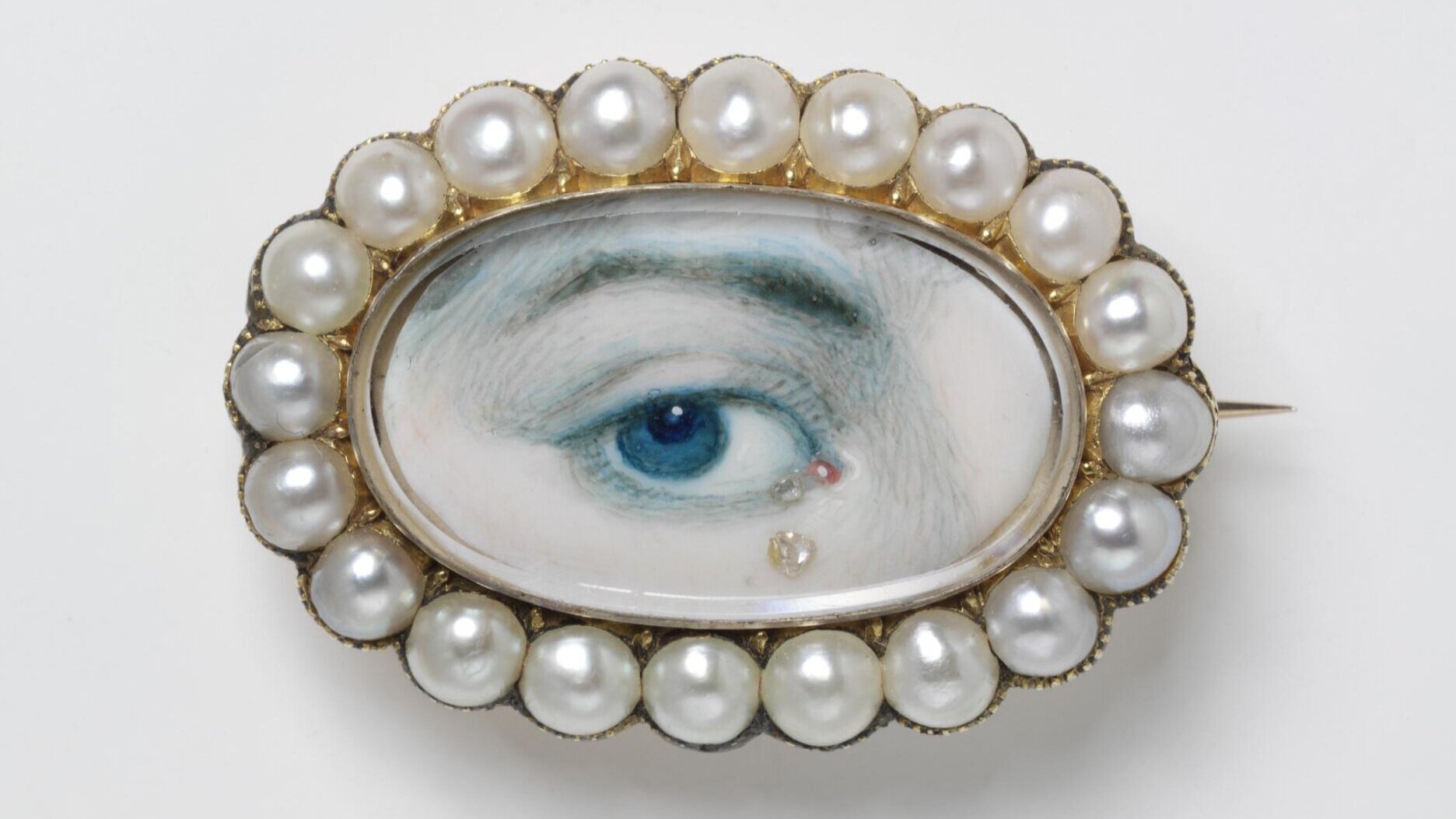
What is a Lover’s Eye?
Today we may send a selfie to our partner, but between the 1780s and 1820s, a Lover’s Eye jewel was a secret way in which romantic relationships communicated. A painted miniature portrait of a person’s eye, these tiny pieces were only centimeters in size and were exchanged between pining lovers. Due to their small stature, Lover’s Eye jewellery could be both secretly or overtly worn, with the former for unknown courtships and the latter for public displays of affection.
The painted portrait was often crowned with gems and displayed in ovals, crescent moons or floral-like clusters to emphasise their inherent romantic nature. In many ways, these jewels were a literal jeweller’s version of a synecdoche, with the eye communicating the whole being’s intimate love and devotion. This one eye is the lustful watching gaze of their beloved, a “look” that can only be understood between romantic partners.
In fact, eagle-eyed (pardon the pun) viewers may have noticed that this particular style of jewellery was actually shown in Bridgerton! Marina Thompson, the distant cousin of the Featherington family, is shown wearing a Lover’s Eye pendant in her opening scenes, an instant sign that she has promised her heart to another suitor.
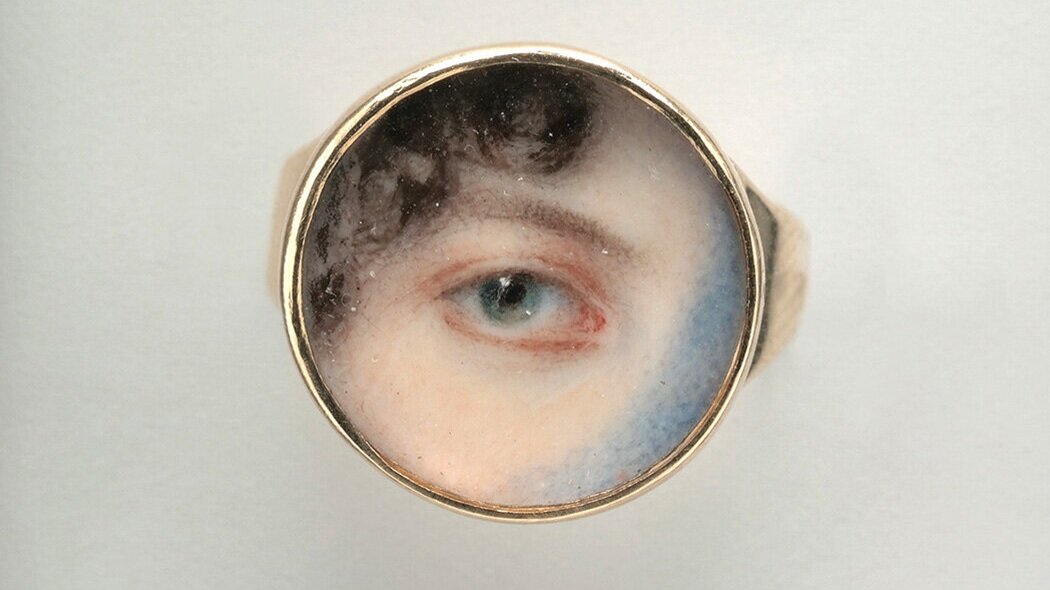
The Little History of Lover’s Eye Jewellery
The first known Lover’s Eye jewel is believed to have been exchanged between the Prince of Wales, George IV and his lover Maria Fitzherbet in 1785. George and Maria were ardent lovers, lovers that tried to get engaged and married but were refused by the King. (Although after receiving the jewel, the two did get secretly married!)
Nevertheless, this painful and passionate longing was translated with the Lover’s Eye jewel. Once Maria received and displayed herself wearing it, this jewel quickly became commissioned by other love-sick courtiers. To immaculately paint something of that size required significant skill, which is why only the very best miniaturists could perform that task. The most famous portrait miniaturists of that time were Richard Cosway (1742-1821) and George Englehart (1750-1829).
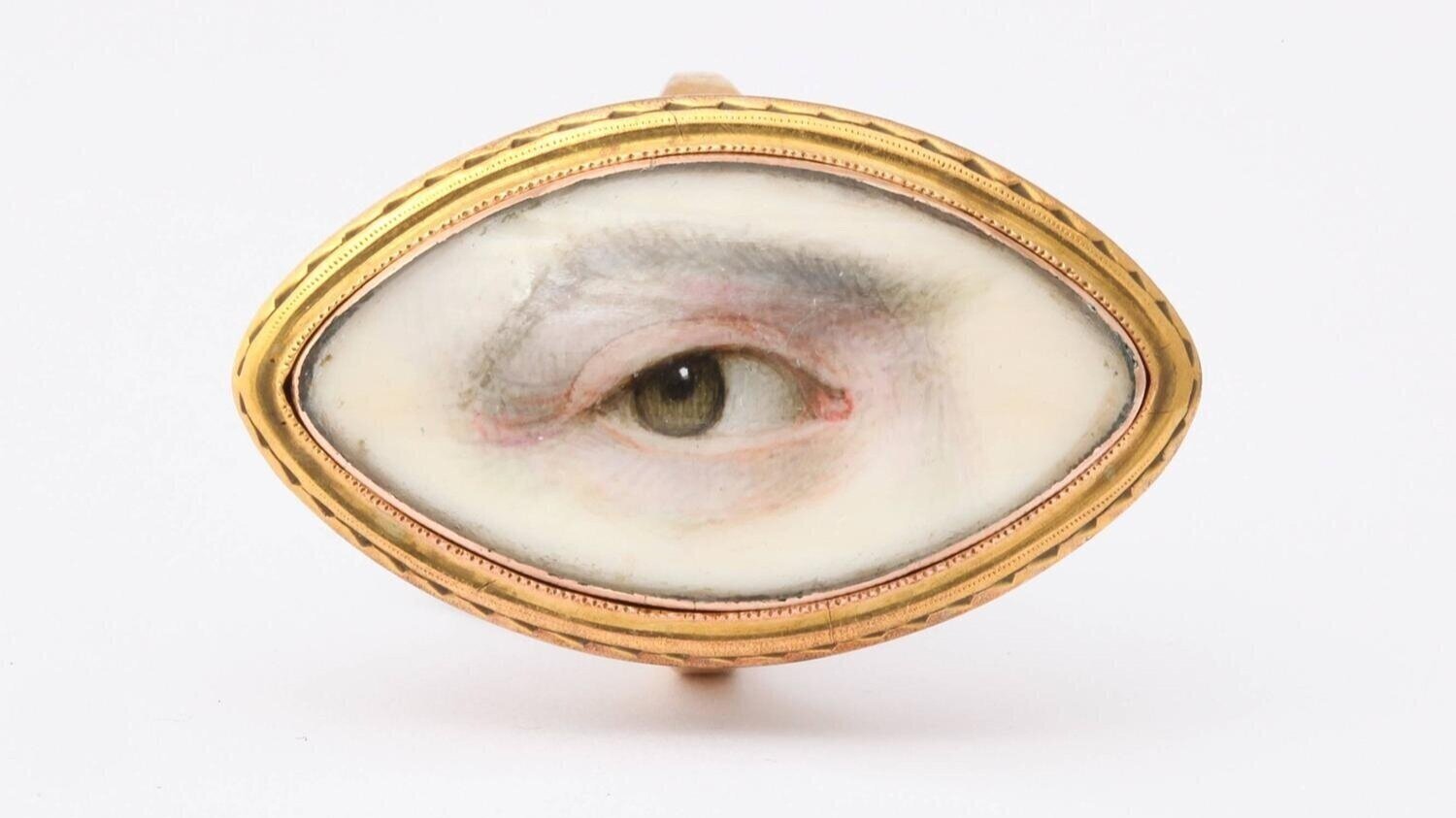
It certainly wasn’t uncommon to send painted miniature portraits of yourself to your partner. In fact, this custom was very popular in the Renaissance and early modern period. Small detailed portraits were exchanged between prospective married couples, and miniature portraits of Kings and Queens were often given as diplomatic gifts to foreign dignitaries. And, Lover’s Eye jewels wasn’t the first time where jewellery and art crossed paths. One of the most famous miniaturists in the world, Nicholas Hilliard (1547-1619), often transformed these portraits into wearable jewels, designed to be pinned to bosoms, attached to chains, or just carried around on a person’s travels. Essex Crystal pieces were another example in which jewellery and portraiture were combined, where adorable painted animals were magnified underneath a dome of polished Rock Crystal. Nevertheless, for Lover’s Eye jewels, the very act of just painting a person’s eye was such an intimate gesture that it was likely very scandalous at first.
To understand why it became so popular, is to actually look at what it represented in the late 18th and early 19th century. This society, much like today’s society in fact, was a society where it was very important to be seen, especially for single young men and women during the fashionable seasons of the summer. This was very well illustrated in Bridgerton and Lady Whistledown’s column, for just being seen with a young gentleman on your own was enough to arouse gossip and suspicion. Yet, despite needing and wanting to be both seen and noticed, it was also paramount that if you weren’t married, you didn’t show any public displays of affection at all - just in case you didn’t want to be subjected to slander.

But of course, as illustrated with Daphne and Simon, and Marina and George, obviously young men and women did take a liking to one another, and what better way to pay homage to this importance of looking through the intense amorous gaze of a Lover’s Eye?
What is so intriguing, and the beauty behind it’s potency, is that a Lover’s Eye jewel equally reveals nothing and everything. As really, only the wearer and the giver would know who it was beneath the Pearls, Diamonds or Paste. It would have been a huge tease to society at the time, and even today, hardly anything is known about who the person was or is. The language and symbolism of gems also played a heavy part in the interpretation of the jewel. If the eye was framed with Garnets, it was a sign of friendship, but if the eye was framed with Pearls it could be one mourning the loss of their lover, and of course, if the eye was surrounded by a halo of Diamonds, it would be to profess the person’s wealth. Considering that this society was so against public affection, it was probably quite brazen to display Lover’s Eye jewels in public.
Eye miniatures lost their romantic symbolism at the end of the Georgian period, and during Queen Victoria’s reign became more associated with familial love and friendship. It was believed that Queen Victoria commissioned many as gifts for her children, her family members and for visiting diplomats. That being said, the style was very much out of fashion by the end of the Victorian period, with painted miniatures itself being completely overtaken by early portrait photography. Nevertheless, the symbolic weight of Lover’s Eye jewels still remain, and it is the renewed interest and intrigue in these jewels today that is keeping them alive. Olivia Annabelle’s designs prolong their legacy, and next time you wear an Olivia Annabelle dress, you will instantly feel a connection with this extraordinary historic motif!
If you’d like to learn more about antique jewellery head over to Lillicoco for exquisite pieces!


